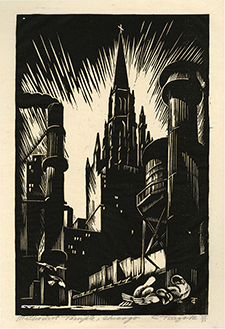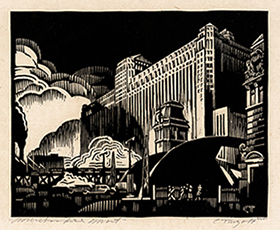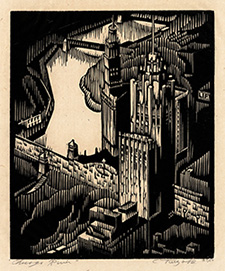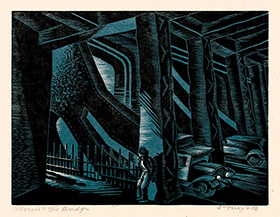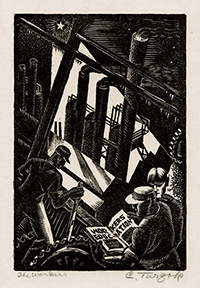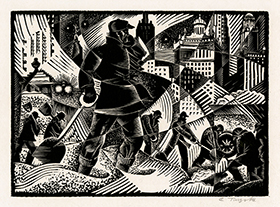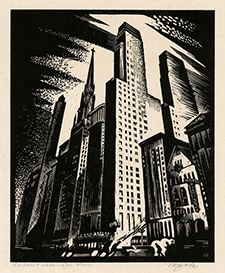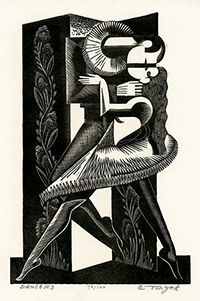Loop
Alley - c.1935, Color Woodcut.
Edition c. 25. Signed
and titled in pencil.
Image size 11 x 8 3/4 inches (279 x 222 mm); sheet size 14 x 10 3/8 inches (356 x 264 mm).
A fine, richly-inked impression, with strong colors, on cream wove Japan paper; the full sheet with margins (11/16 to 1 1/2 inch); slight toning to the paper within the artist's previous mat opening, otherwise in excellent condition. One of a series of color woodcuts entitled Chicago
Moods in Color, created by the artist for the Works Progress Administration (WPA). Scarce.
Collections: Krannert Art Museum, University of Illinois; U. S. Library of Congress.
The Loop is one of three downtown community areas in Chicago, bounded by the Chicago River to the north and west, Harrison Street to the south, and Lake Michigan to the east. At the iconic center of the city, it contains the tallest of Chicago's skyscrapers. The Loop also holds a world-class collection of public art, in the form of huge street-side statues by many of the 20th century's most famous sculptors. The Loop initially got its name from the looping route of streetcars that served as the transit hub of early downtown Chicago, but the name has come to be defined by the modern era's looping route of elevated train tracks, serving seven CTA lines, which ensures the continued prominence of the area as the center of Chicago's working world. Despite the gradual northwards shift in the city's center with increasing suburbanization, all tracks lead there and accordingly the Loop remains the most attractive location in the city for major businesses, and for many of the city's visitors.
$3800. |
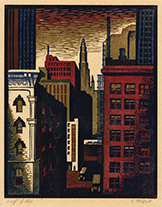 |


